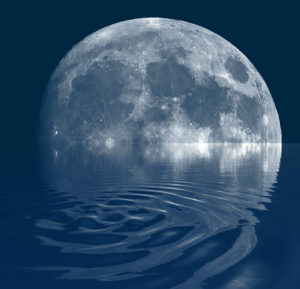
Lunar orbiters such as India’s Chandrayaan-1 spacecraft and NASA’s Lunar Reconnaissance Orbiter (LRO) recently detected water icy on the floor of some of the south polar craters, but no one is sure exactly when or how that ice got there. A new study by researchers from Brown University and NASA’s Goddard Space Flight Center suggests while a majority of those ice deposits are likely billions of years old, some may be much more recent.
If the Moon has enough water, and if it’s reasonably convenient to access, future explorers might be able to use it as drinking water or to convert it into hydrogen and oxygen for rocket fuel or oxygen to breathe. Image credit: NASA’s Goddard Space Flight Center.
Using data from LRO, Brown University researcher Ariel Deutsch and colleagues looked at the ages of the large craters in which evidence for south pole ice deposits was found.
To date the craters, they count the number of smaller craters that have accrued inside the larger ones.
The majority of the reported ice deposits are found within large craters formed about 3.1 billion years or longer ago, they found.
Since the ice can’t be any older than the crater, that puts an upper bound on the age of the ice.
“Just because the crater is old doesn’t mean that the ice within it is also that old too, but in this case there’s reason to believe the ice is indeed old,” the scientists said.
“The deposits have a patchy distribution across crater floors, which suggests that the ice has been battered by micrometeorite impacts and other debris over a long period of time.”
“If those reported ice deposits are indeed ancient, that could have significant implications in terms of exploration and potential resource utilization.”
“There have been models of bombardment through time showing that ice starts to concentrate with depth. So if you have a surface layer that’s old, you’d expect more underneath,” Deutsch said.
While the majority of ice was in the ancient craters, the team also found evidence for ice in smaller craters that, judging by their sharp, well-defined features, appear to be quite fresh. That suggests that some of the deposits on the south pole got there relatively recently.
“That was a surprise. There hadn’t really been any observations of ice in younger cold traps before,” Deutsch noted.
If there are indeed deposits of different ages that suggests they may also have different sources.
Older ice could have been sourced from water-bearing comets and asteroids impacting the surface, or through volcanic activity that drew water from deep within the Moon.
But there aren’t many big water-bearing impactors around in recent times, and volcanism is thought to have ceased on the Moon over a billion years ago.
So more recent ice deposits would require different sources — perhaps bombardment from pea-sized micrometeorites or implantation by solar wind.
“When we think about sending humans back to the Moon for long-term exploration, we need to know what resources are there that we can count on, and we currently don’t know,” said Brown University’s Professor Jim Head, co-author of the study.
“Studies like this one help us make predictions about where we need to go to answer those questions.”
The results were published in the journal Icarus.